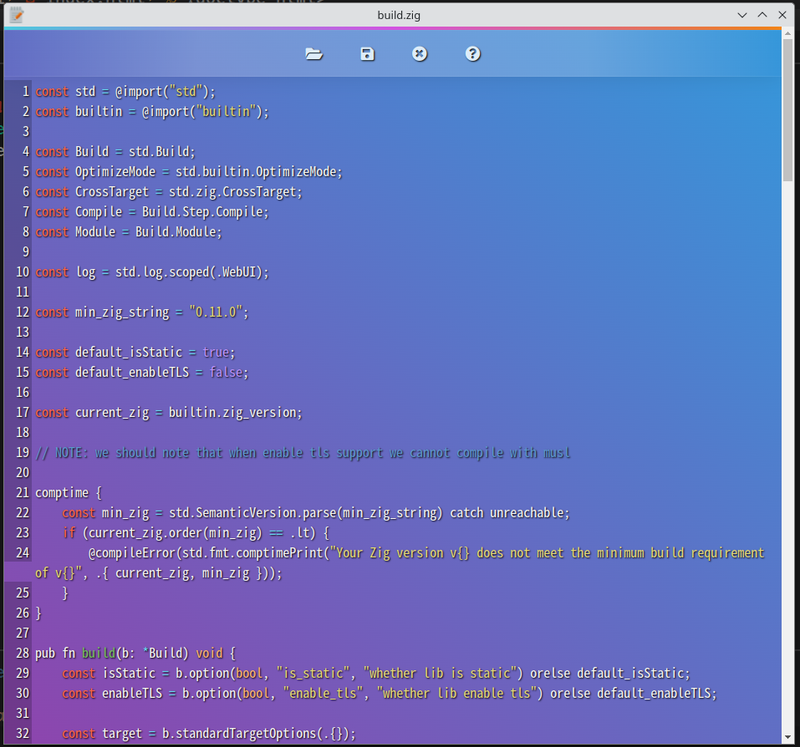zig-webui is a zig library of webui.
Github: https://github.com/webui-dev/zig-webui
WebUI is not a web-server solution or a framework, but it allows you to use any web browser as a GUI, with your preferred language in the backend and HTML5 in the frontend. All in a lightweight portable lib.
We use zig to wrap the C library, which makes it easy for us to use it in zig.
Feature
- Parent library written in pure C
- Lightweight ~200 Kb & Small memory footprint
- Fast binary communication protocol between WebUI and the browser (Instead of JSON)
- Multi-platform & Multi-Browser
- Using private profile for safety
Here is a text editor with zig-webui
Examples
Here we make a minimal example with zig-webui:
First
We init a zig project with zig init-ext or zig init(zig nightly).
Then we add this to our build.zig.zon:
.@"zig-webui" = .{
.url = "https://github.com/webui-dev/zig-webui/archive/main.tar.gz",
.hash = <hash value>,
},
Note that the hash is given by zig. Of course, zig nightly has provided a command to get package hash and write it to build.zig.zon:
zig fetch --save https://github.com/webui-dev/zig-webui/archive/main.tar.gz
Second
We need to config build.zig:
const zig_webui = b.dependency("zig-webui", .{
.target = target,
.optimize = optimize,
.enable_tls = false, // whether enable tls support
.is_static = true, // whether static link
});
// add module
exe.addModule("webui", zig_webui.module("webui"));
// link library
exe.linkLibrary(zig_webui.artifact("webui"));
OK, now we have configed this project!
Let us code!
Code
const webui = @import("webui");
pub fn main() !void {
var nwin = webui.newWindow();
_ = nwin.show("<html><head><script src=\"webui.js\"></script></head> Hello World ! </html>");
webui.wait();
}
We import the package webui, and use its method newWindow to create a window, then show it(we ignored the returned value, it is bool to tell us whether the window showed correctly).
Finaly, we use webui.wait to block the main funcion, it will break when window is closed!
Currently zig-webui is still under development and more features will be added!









Oldest comments (3)
Could you give some examples where you think web-ui is a good choice and where a multi-platform gui-library like Qt etc. or maybe even things like Raylib might be a better or worse choice depending on your app/other constraints?
The advantage of the webui is that you can use the front end to write the ui,zig handles the back-end logic, and the native ui like qt is the choice for speed and performance
I have a feeling that if you're not making that complicated of a UI that only stays on Windows, Mac and Linux, and you want to release a binary that's super light, using the OS's built-in web renderer would be super useful! Also helps if you have experience in HTML and CSS that you want to exercise.
From my experience so far, Qt is incredibly huge and slows down compile times and increases build sizes, but there's almost certainly some more modular ways to utilize Qt that I'm not aware of yet.